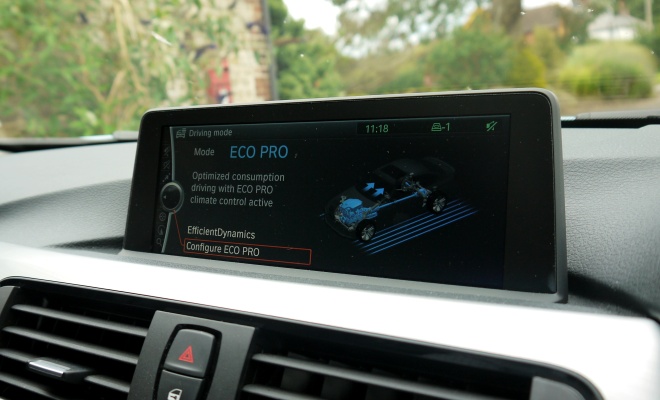
Rating: 5 out of 5 stars
Good: Great to drive with impressive fuel economy
Bad: Same-again styling and pricey options
Price: From £28,080
Mid-size, three-box saloons are typically chosen as company cars by mid-ranking business people. Most consumers spending their own money don’t buy this kind of car when shopping brand new, instead typically plumping for something smaller and cheaper with a practical hatchback. Good: Great to drive with impressive fuel economy
Bad: Same-again styling and pricey options
Price: From £28,080
But after two to three years of pounding the motorways, a nearly new Beemer makes a great second-hand buy. They are built to last and will feel like a great place to sit and steer for ages afterwards.
Give it a few years and I might well go shopping for a used 320d Efficient Dynamics myself, because this is a disarmingly good car. BMW has loaned it to me for a short test, but it’s turning into quite a long test because I really don’t want to hand it back.

It’s hard not to warm to a vehicle that can hit 62mph in a devilish eight seconds, when no-one’s watching, or waltz to an angelic 68.9mpg and 109g/km under the narrowed eyes of a tax inspector.
The Efficient Dynamics or ED edition is powered by a 2-litre four-pot diesel that has been mildly detuned in favour of economy, losing 21bhp compared with the standard 320d to give a still respectable peak of 163bhp, plus 380Nm of torque. The gearing has also been lengthened, the suspension lowered, and fuel-saving tyres fitted to the 16-inch alloy rims.
Fortunately the car doesn’t feel hobbled by these adjustments. If you want to make full use of the engine’s potential, there’s a Sport setting available through a rocker switch next to the gearlever, which makes a very noticeable difference to throttle response and steering feel. In this mode, on a typical twisty British B-road, the Beemer has quicker reactions and better poise than I can summon up as its driver.

The car benefits from a lot more fuel-saving cleverness than I’ve listed above, but most such features aren’t specific to this model and indeed are applied to the 3-Series in general, helping to trim BMW’s fleet-average emissions. Party tricks include an alternator that runs mostly when the car is slowing down, an aircon compressor, oil pump and coolant pump that disconnect from the engine when not required, electric power steering that draws power only when the wheel is being turned, and a dashboard shift indicator to help the hapless driver pick the most economical gear. The driver is very much the weakest link when it comes to fuel economy these days, particular when given their own stick to shift.
There’s an engine stop-start function of course, but it now works with the automatic gearbox as well as the manual, and indeed the new eight-speed auto is actually more economical than the six-speed manual I’m driving, although it does increase the price by a noticeable £1,525. The manual is still an excellent piece of kit, feeling as if a set of well-oiled, precision-ground cogs have been carefully laid out under my palm. Which of course they have, given the car’s rear-wheel-drive layout.

Alongside the Sport setting mentioned above, all new 3-Series cars get a Comfort option and an Eco Pro mode. Choosing the latter is like putting a pillow under the throttle, while also making more thrifty use of power-hungry features like heated seats.
While the car understandably loses some sparkle in Eco Pro mode, it remains more agile and responsive than you might expect from its low CO2 figure. To tempt you to use this responsible mode, the dashboard encouragingly displays exactly how much fuel has been saved by Eco Pro in extra miles to the next fill-up. The instrument panel also gains an eye-catching blue gearstick icon, which pops up from time to time to make the shift indicator’s hints more noticeable.

After an hour or two spent happily playing around with all three driving modes, including seeing how fast the car might go around corners in Sport setting, the trip meter indicates an overall 53mpg. That seems like an impressive result to me.
The remainder of the car’s appeal hinges on how you feel about BMWs in general, not least the brand’s weighty baggage.
From a styling point of view, this F30 version of the 3-Series looks very much like the previous E90 fifth-generation car (which is still being sold in E91 estate format).
But there are palpable differences if you squint hard enough – the crease along the flank is more pronounced, the boot looks a little more upright, and the front end is quite distinct.

And inside, the dashboard is noticeably improved. Out goes the ugly double-bubble cowling and in comes a new high-contrast, widescreen panel that copes perfectly well without a sun-shade.
And if the new car seems a little bigger than the outgoing model, that’s because it is. It’s 9cm longer overall and 5cm longer in the wheelbase, yielding a knee’s-width of extra legroom in the rear. But while it has grown it fortunately hasn’t piled on the pounds – the F30 is up to 40kg lighter than the E90, depending on the exact model, benefiting both agility and economy.
Priced from £28,080, the 320d ED feels like a very seductive package overall.

That said, my test car was loaded with £7,695-worth of options, including £1,265 spent on leather and £410 on sports seats, £610 on metallic paint, £1,995 on a media system upgrade package, and £920 for a set of adaptive Xenon headlamps.
Altogether, at almost £36,000, this fully-kitted-out car is not quite such a beguiling proposition.



